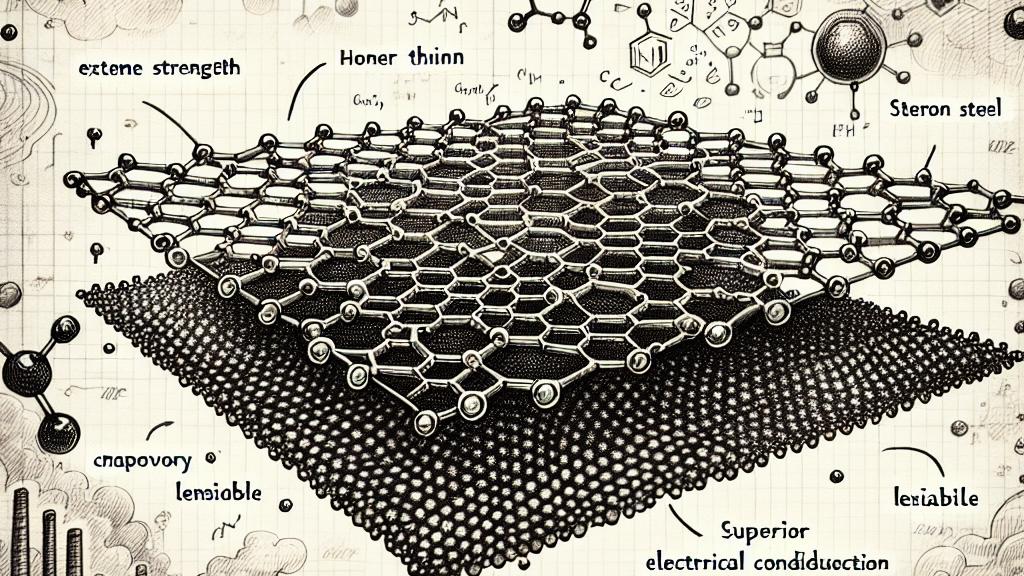Discover How Graphene Can Change Water Filters and Sensors
Overview
- Graphene's extraordinary properties provide innovative solutions to pressing global challenges.
- Recent discoveries showcase its potential to revolutionize water purification and sensor technologies.
- Grasping the power of graphene may lead to groundbreaking advancements that significantly enhance our daily lives.

What is Graphene?
At the forefront of materials science, graphene dazzles with its unique structure: a single layer of carbon atoms elegantly arranged in a honeycomb formation. Remarkably thin—just 0.345 nanometers—it stands out as the strongest material ever tested, surpassing even steel. Since its isolation in 2004, graphene has captivated scientists and innovators alike, drawn by its phenomenal electrical conductivity and flexibility. These characteristics make it a prime candidate for revolutionary applications, particularly in the realms of water filtration and sensor technology, where it has the potential to change our lives for the better.
Recent Breakthroughs in Graphene Research
Exciting progress has surfaced from the University of Würzburg, where researchers have made a significant leap forward in graphene technology. They crafted a highly innovative model system that allows for the selective passage of halide ions, particularly chloride, through the graphene lattice. By strategically introducing defects into its structure, these scientists managed to control which ions flow through, leading to groundbreaking implications. Just picture the possibilities: we could harness this technology to revolutionize water purification processes, transforming seawater into safe drinking water with unprecedented efficiency. This isn’t just a scientific whim—it's a promising solution that could reshape our future.
Applications of Graphene in Water Filtration
Imagine sipping pure water extracted straight from the ocean. Sound too good to be true? Thanks to graphene, this dream could soon become a reality. Traditional desalination methods are often energy-intensive and costly, but incorporating graphene-based filters could dramatically change that. They can effectively filter out salts and contaminants while using far less energy, promising affordable clean drinking water even in drought-stricken areas. Consider the profound impact this could have on communities struggling with water scarcity—access to safe drinking water is not just a luxury; it’s a fundamental human right, and graphene could be the key to unlocking it.
Sensor Technology and Graphene
Graphene also shines brightly in the field of sensor technology. Its exceptional conductivity makes it perfect for detecting even the faintest traces of harmful substances, paving the way for revolutionary advancements in environmental monitoring and food safety. Picture a graphene-based sensor that alerts you to toxic pollutants in water or dangerous bacteria in food before you even realize there’s a problem. This capability to monitor and ensure the safety of our environment and food supply could save countless lives and enhance the quality of life for people everywhere. The implications here are not just significant; they are life-changing.
Looking Forward with Graphene
As we peer into the future, the prospects for graphene are not just exciting; they are downright inspiring! Researchers are actively exploring ways to develop larger stacks of this remarkable material, which promises to yield even greater efficiencies in water filtration and sensing technologies. Just think about it: a world where our water is not only pure but is continuously monitored for safety through intelligent sensors powered by graphene. This vision is more than a distant dream; it’s within our reach, and it could redefine how we interact with our environment. The journey of graphene innovation is just beginning, and we can hardly wait to witness the incredible advancements awaiting us!

Loading...